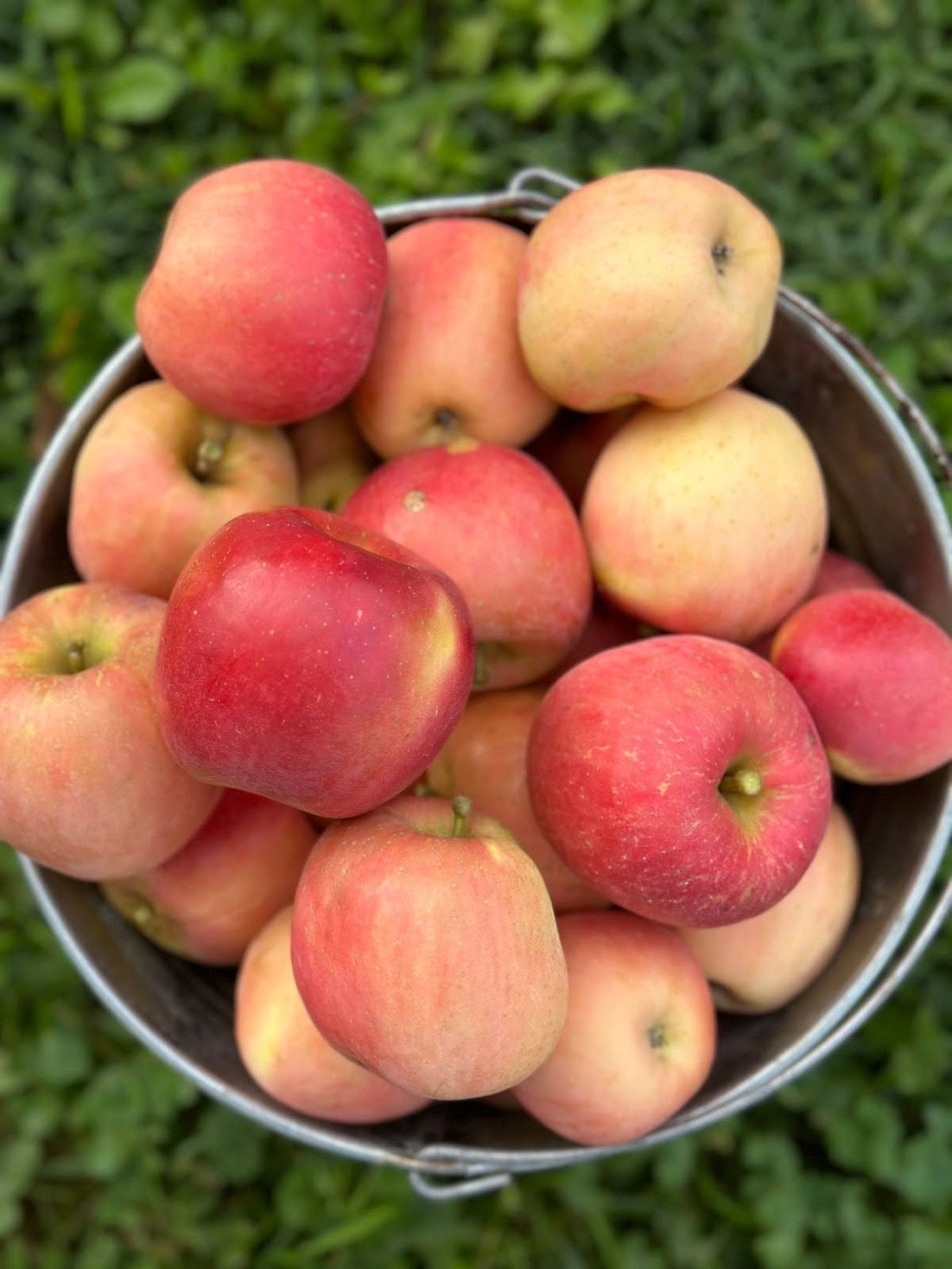
These last lingering days of September find us busily harvesting the best of summer’s bounty…gathering, sorting, sharing, and “putting by” or “putting up” as our grandmother’s called it. Trying our best to hold onto that flavor. You know what I mean, that flavor…a warm garden tomato or the sweetness of just-picked corn. There’s nothing like farm-to-table, or better yet, backyard-to-table!
Around here bunches of herbs are drying on an old ladder, strings of hot peppers are dangling from a cupboard, and everyone’s at risk of tumbling as I clutter the kitchen floor with buckets of apples, tomatoes, cabbages, peppers, and onions. The canner is bubbling, the cooker is steaming, and the timers are buzzing!
The dictionary describes frenetic as: “Fast and energetic in a rather wild and uncontrolled way.” Yep, that would describe me in the kitchen these days. However; a much needed break and a little paint pen magic on a newly-picked pumpkin make for some hometown fun!

Even in today’s snappier, hastier world, as the days shorten and the evening shadows lengthen, both city and country kitchens find it satisfying to “put by”. While once a necessity, “putting by” today is definitely not the grueling work it once was. We can make it as simple as air-drying herbs or as involved as dusting off the pressure cooker and canning foods for long-term storage. It’s really up to you! And for the holidays or welcome-to-the-neighborhood gifts, it’s so nice to be able to share a jar of sweet homemade jam or tangy dill pickles. As the saying goes, “The best gifts are tied with heartstrings.”
Today finds me up to my ears in garden goodness, so come along for the ride as I try to hang onto it all…yep, it’ll be messy, maybe even sticky, and most likely “frenetic”, but I promise, it’ll be fun!
Air Drying:
Herbs: The easiest way to save those fragrant cooking herbs is oh-so easy. Simply gather herbs into a bundle, give them a little shake to send any insects on their way, a quick rinse, and tie into bunches. Tie securely with a rubber band or tightly with twine as the herbs will shrink while drying.
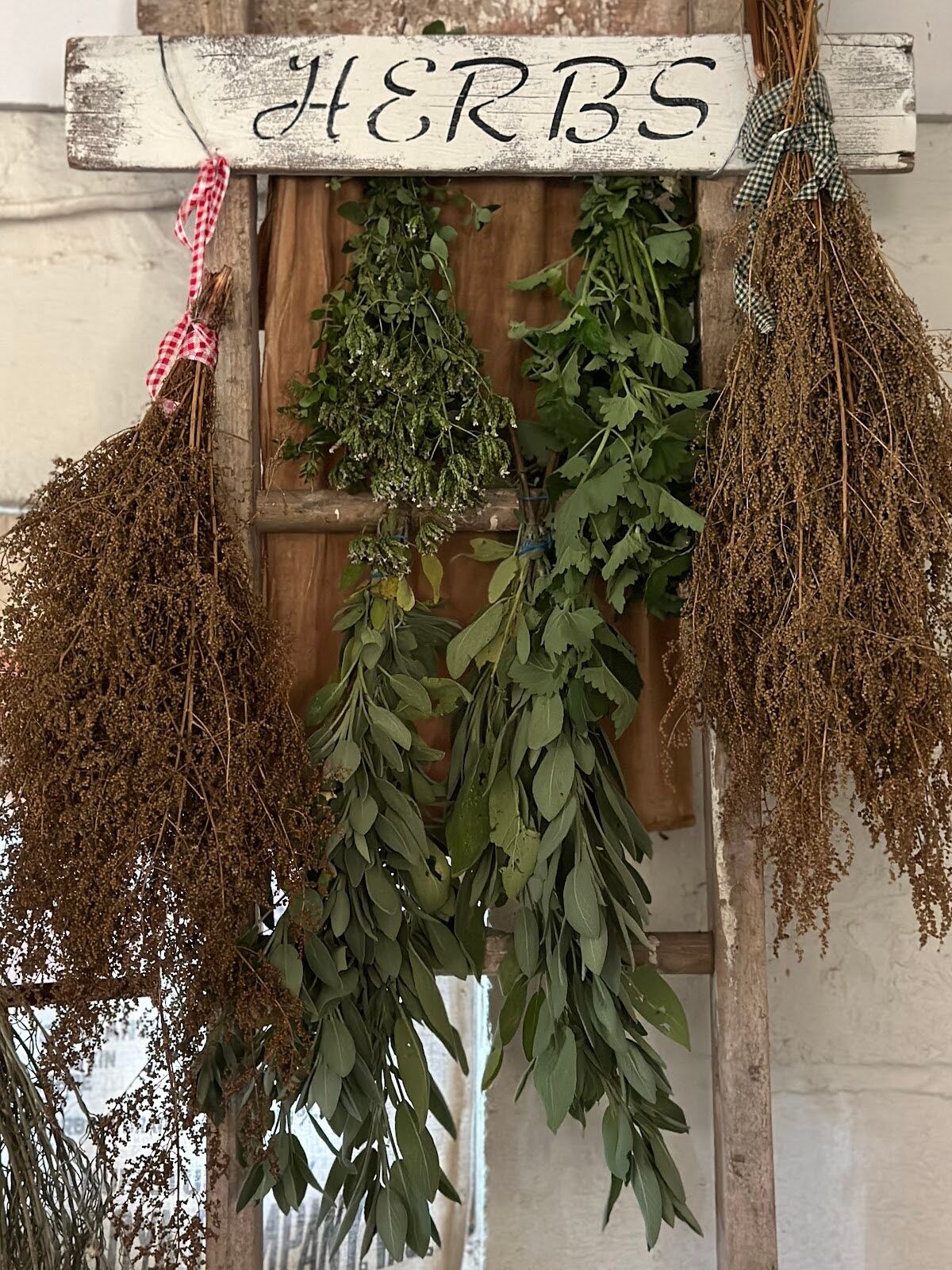
Hang them upside down in a well-ventilated spot. If the herbs have a lot of seeds (chamomile, chives, dill) cover them with a paper bag cut with some small slits. This lets the air circulate, but also catches any falling seeds. In about 10-14 days, the herbs should be dry. You can slip off the leaves (they’ll crumble easily) and store in an airtight container; ready whenever you need them.
Herbs for Tea: Peppermint, chocolate-mint, chamomile, spearmint, lemon verbena, and lemon balm all make great herbal teas. You can dry them just like the cooking herbs above.
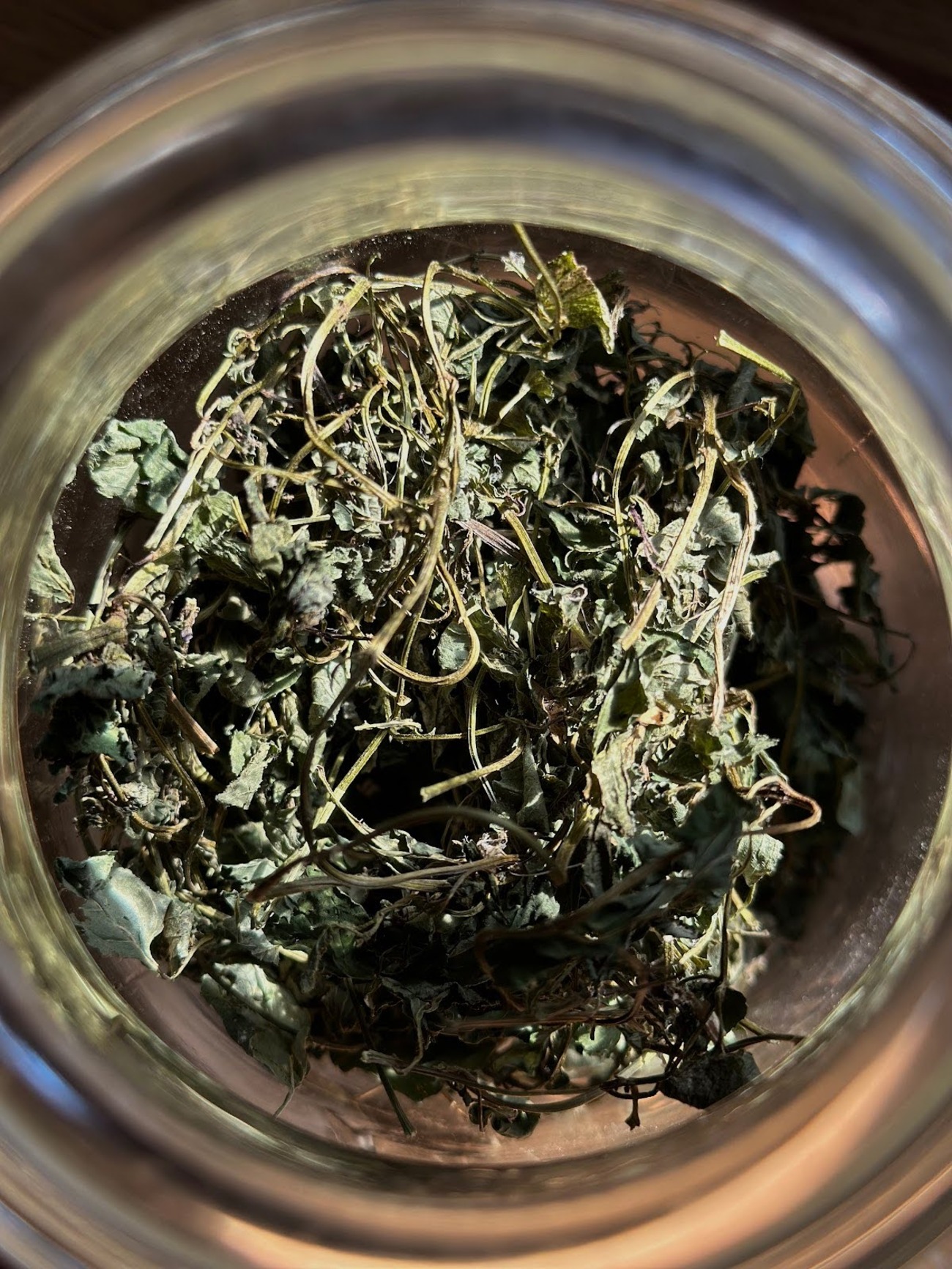
A friend gifted me with some dried chocolate mint from her garden, and being the chocoholic that I am, I’d heard of chocolate herbal tea, so I was on a mission! All I needed was cocoa nibs (dried, roasted, and cracked cocoa beans), which were new to me. I crumbled the mint leaves, removed the stems, and combined them with some cocoa nibs (the amount will depend on the amount of mint leaves used). When it was tea-time, I scooped the mixture into a mesh tea ball, set it in my cup, then topped with boiling water. After about 5 minutes, I added a sprinkle of sugar.
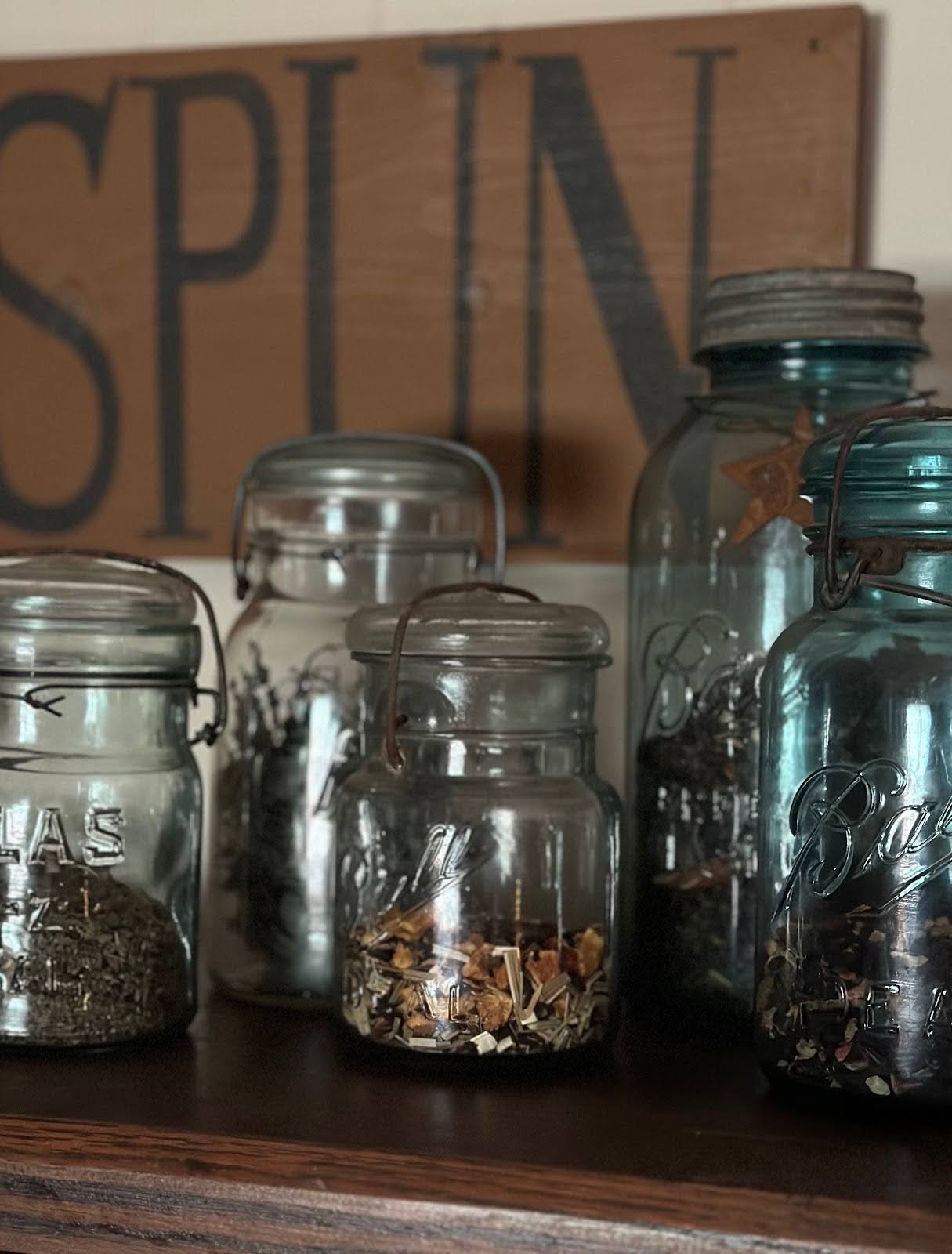
Was it like hot chocolate? Nope, but it was delicious and so quick & easy that I dried different types of herbs just for tea. I filled several jars and put them on top of my cupboard. Then, when the days begin to get cooler, a warming cup of tea will be at my fingertips.
Peppers: If you like to sprinkle pepper flakes in your recipes or add a dried pepper to a jar of honey to give it some kick, they dry easily, too!
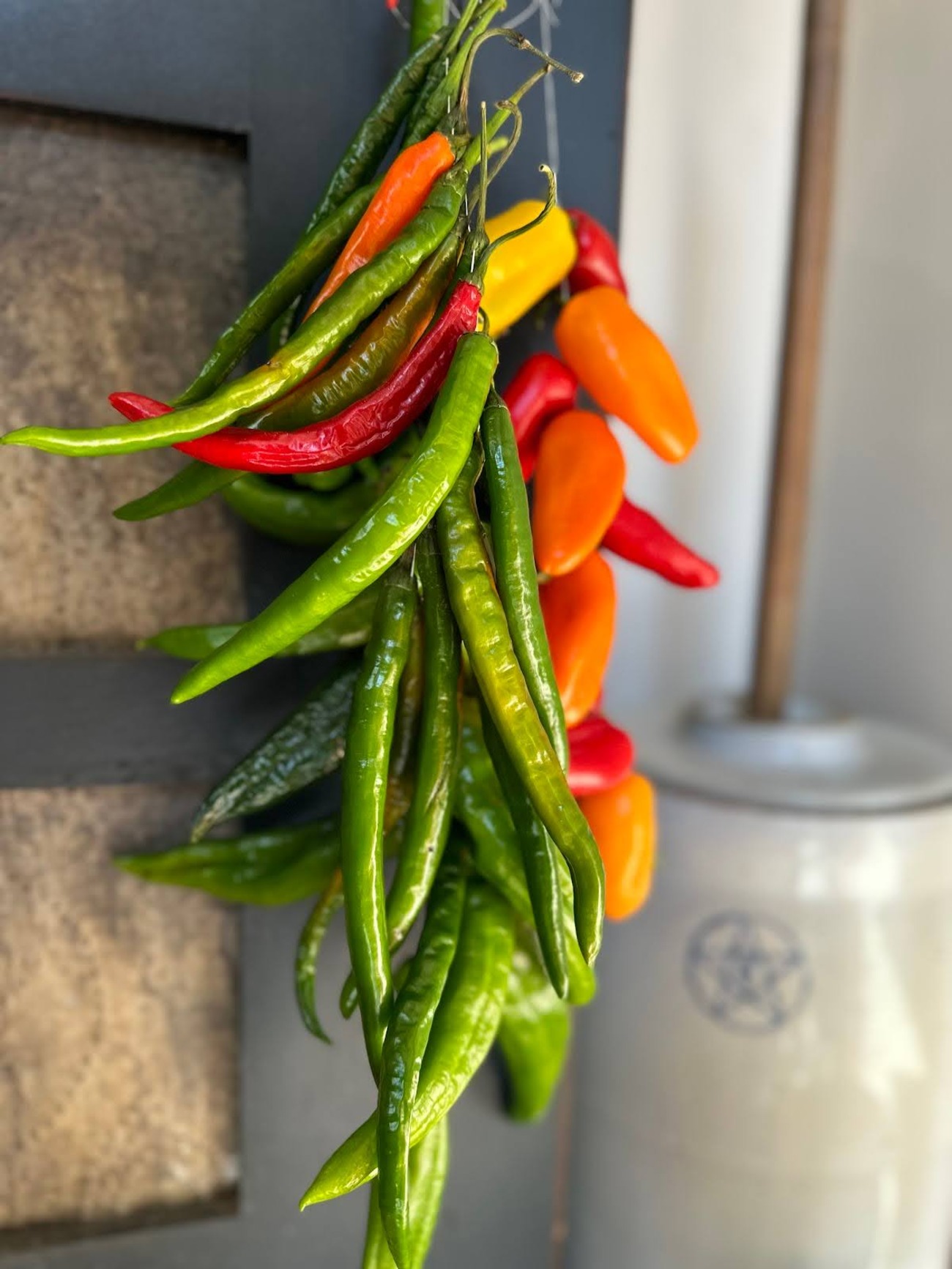
The peppers need to be thin-skinned to dry completely. Think Cayenne, Poblano, Ancho Chile, and some Jalapeño (the monster ones are a little too thick-skinned, but you can always try). Choose firm peppers without blemishes, rinse them off, then pat dry. You’ll need a needle and heavy thread…I had quilting thread on hand.
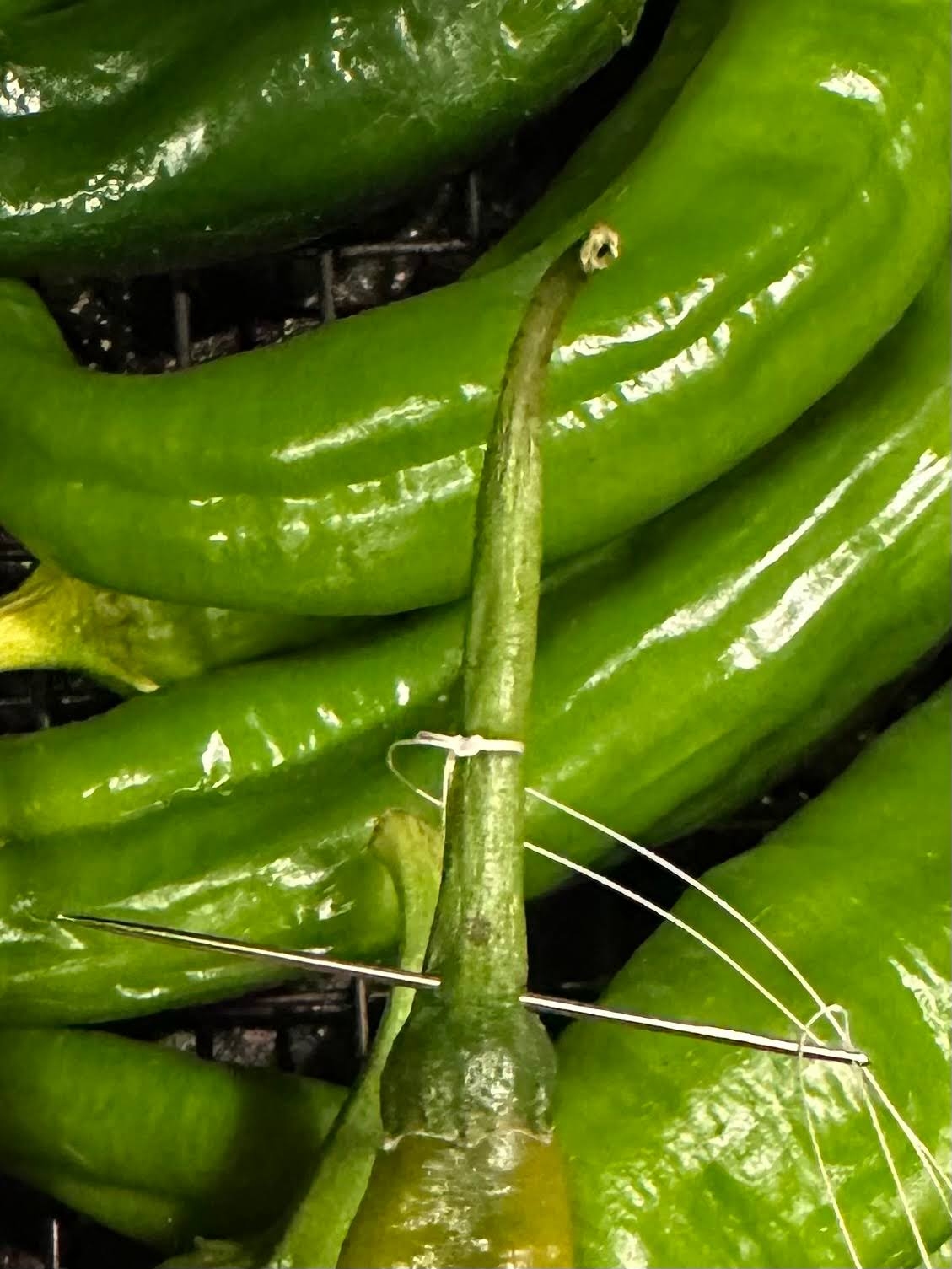
Tie a tight knot around the stem end of the first pepper, slide the threaded needle through the stem; slide the pepper on. Add the remaining peppers one at a time… just slip the needle and thread through the stem and slide each along the thread.
When you’ve added the last pepper, leave enough thread to make a loop to hang them. They’ll need to hang in a dry spot with plenty of air circulation, and should be ready in about 4 – 6 weeks.
Freezing:
Freezing is another way to preserve garden harvest. Fruit needs to be rinsed well, patted dry, and set aside until completely dry. You don’t want berries to stick together in the freezer. Prepare the fruit however you’d like…you may want to slice and hull strawberries. Line a sheet pan with parchment paper and arrange fruit in a single layer. Freeze for a few hours, then place it in an airtight container or freezer bags.
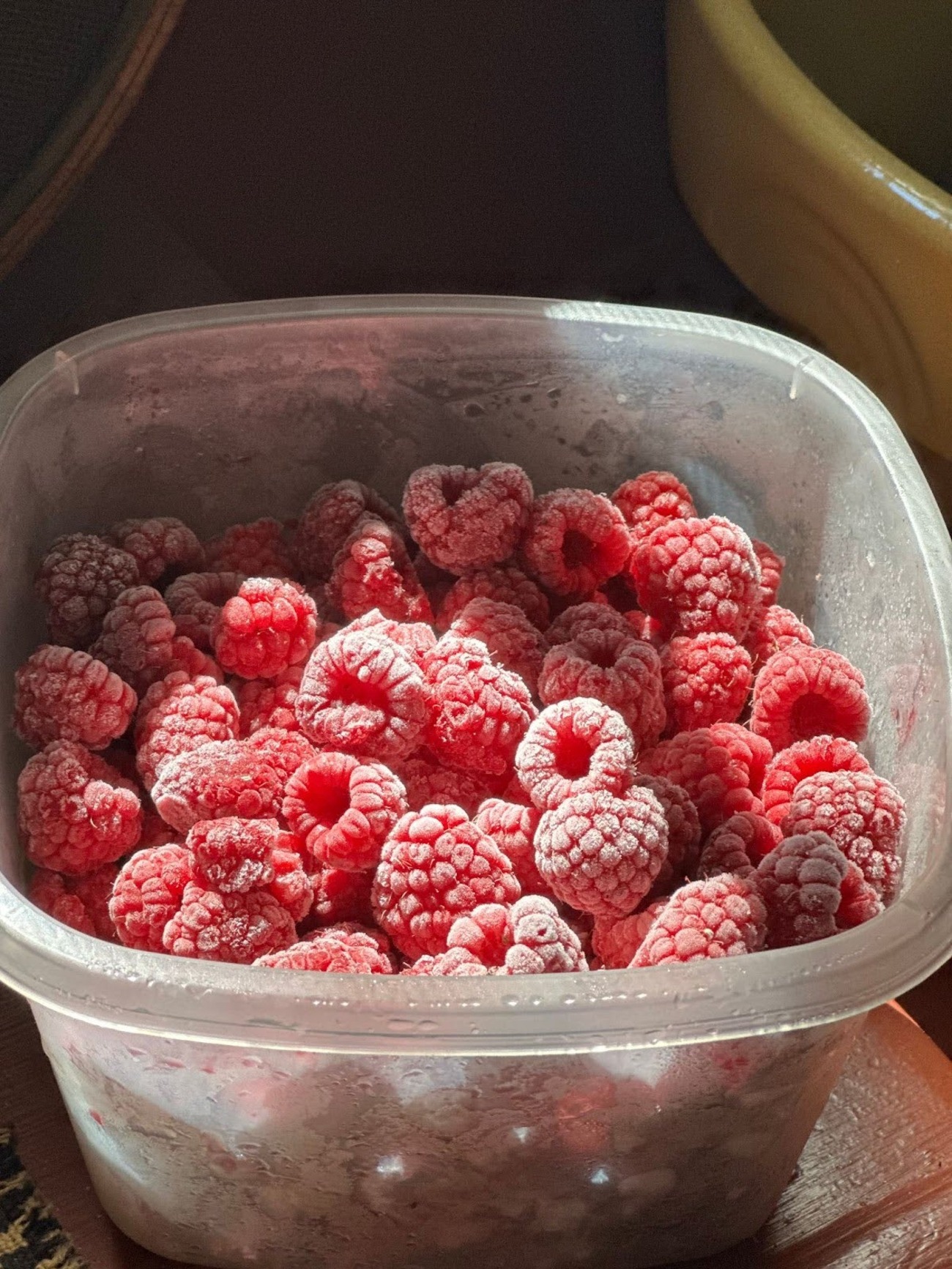
Vegetables will need rinsed as well, and prepped however you’d like…trim green beans, core tomatoes, chop zucchini, etc. Most veggies need an extra step: they need to be blanched to help them keep their texture, color, and nutrients. Follow your recipe, but blanching is just partially cooking them in boiling water for a few short minutes. After they’re blanched, they get a cold water bath, drained, patted dry, and they’re ready for freezer bags.
Dehydrating:
So many foods can be added to a dehydrator…apples, bananas, grapes, strawberries, even kale, carrots, and onions. Be sure to read the instructions that came with your particular dehydrator as each one is a little bit different. I use mine mostly for apples, which make a quick & easy snack.
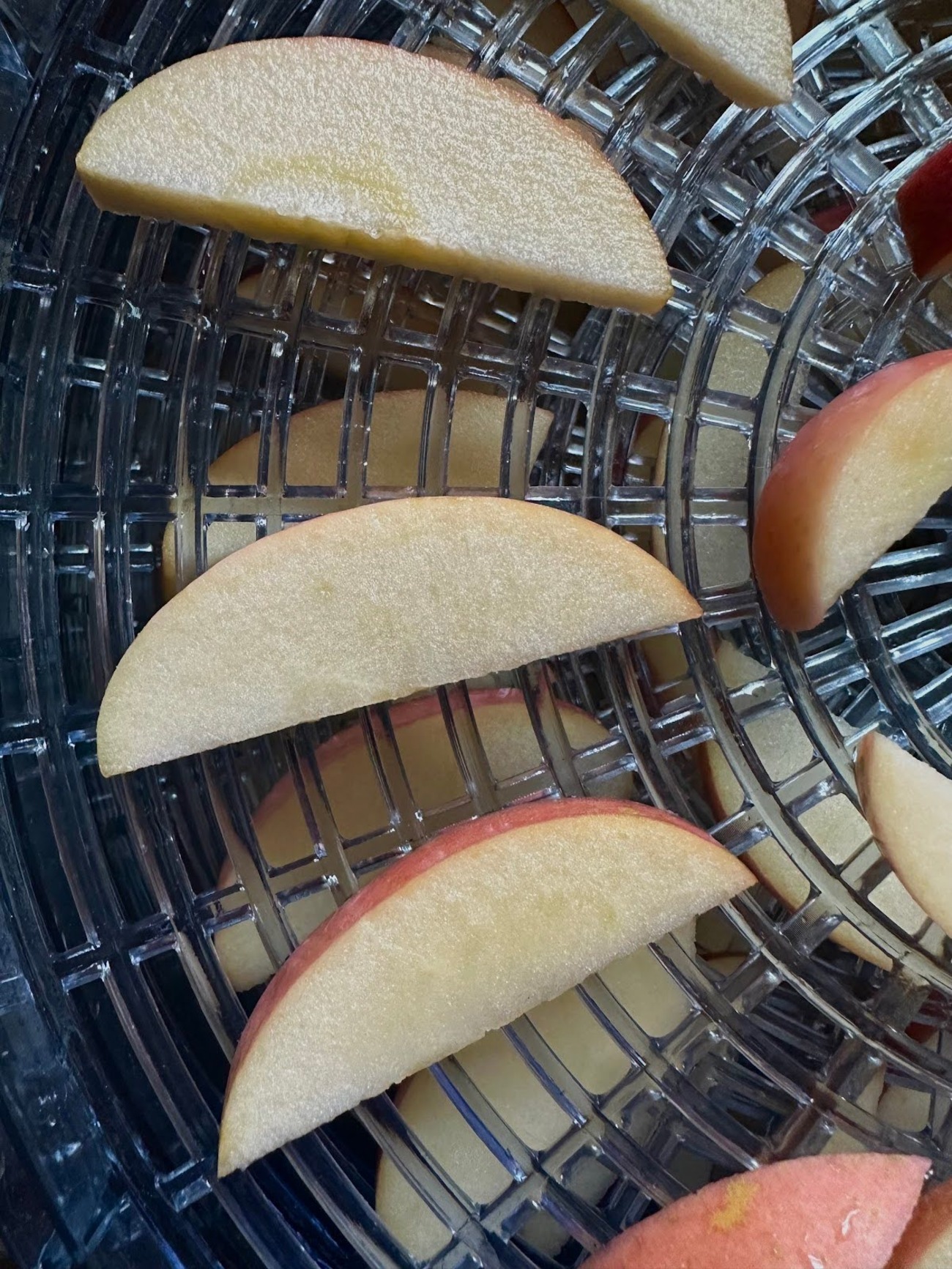
The apples are cored and sliced about 1/3 of an inch thick. I put them into a lemon juice-water mixture for a few minutes (1 tablespoon lemon juice to 1 cup water) to help keep them from browning, and lightly pat dry. Slices are arranged in a single layer on the racks, then dry for several hours. For me, it took about 10 hours until they were pliable, but had no moisture visible when bending them.
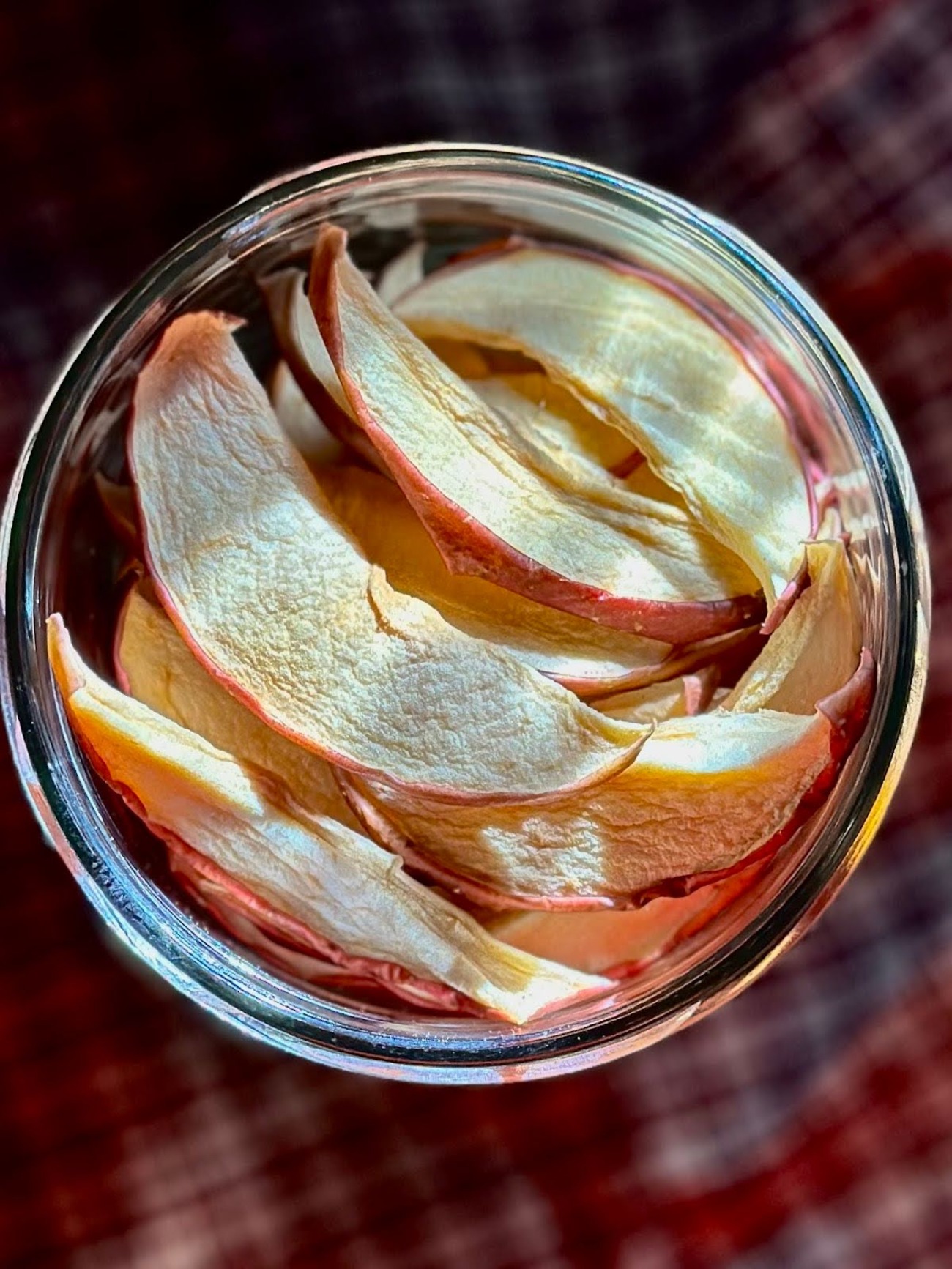
Fermenting:
With fermenting kits on store shelves now, it’s a snap to ferment pickles, beets, hot peppers, or sauerkraut.
I am a true-blue sauerkraut girl. I know, it’s a small group of folks that join me, but for me, it’s a must alongside pork roast or stuffed pork chops (did I mention it’s delicious sautéed in bacon drippings?) So when I was given several heads of cabbage a couple of years ago, I decided to make my own sauerkraut.
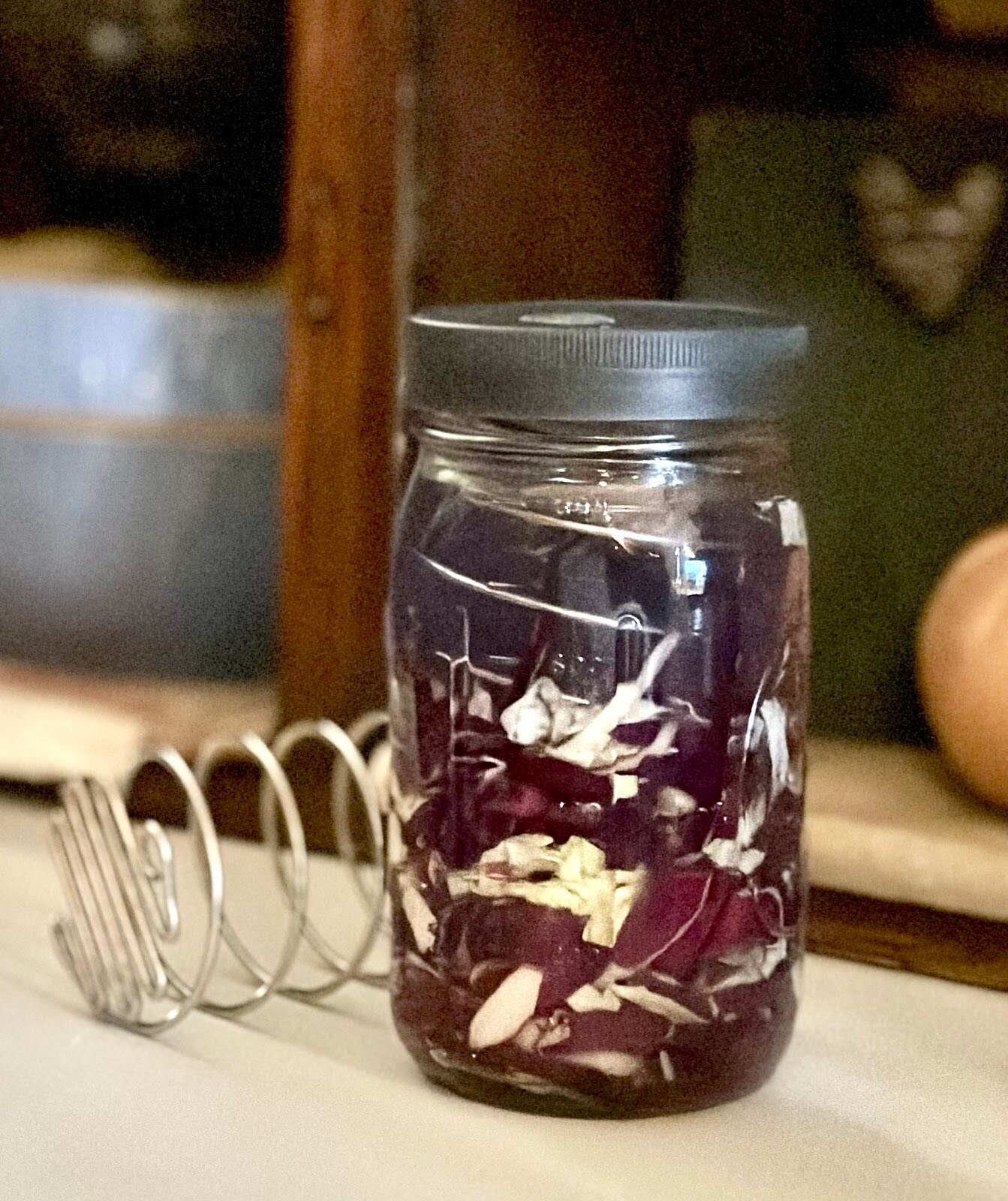
I found an all-in-one kit that made it easy…recipes, spring, and airlock jar lid that fits any wide-mouth canning jar. This year I added some red cabbage and in 3 to 4 weeks I’ll have homemade sauerkraut!
Home Canning:
Water Bath Canning or Pressure Cooker Canning can be used to preserve foods for long-term storage; however, in order to keep the foods safe for eating, it’s important to read, read, read. Suburban Farmgirl Nicole just posted a great way to get started canning tomatoes and talks about the modern wisdom in following steps the USDA recommends.
Some foods are high-acid and are perfectly safe to water bath can, while others are low-acid…meaning they need the high heat of a pressure cooker to keep the food completely safe.
This is the latest link to the USDA’s guide to home canning: USDA
While I prepare and then water-bath can pickles because the heavy vinegar brine makes them a high-acid food,
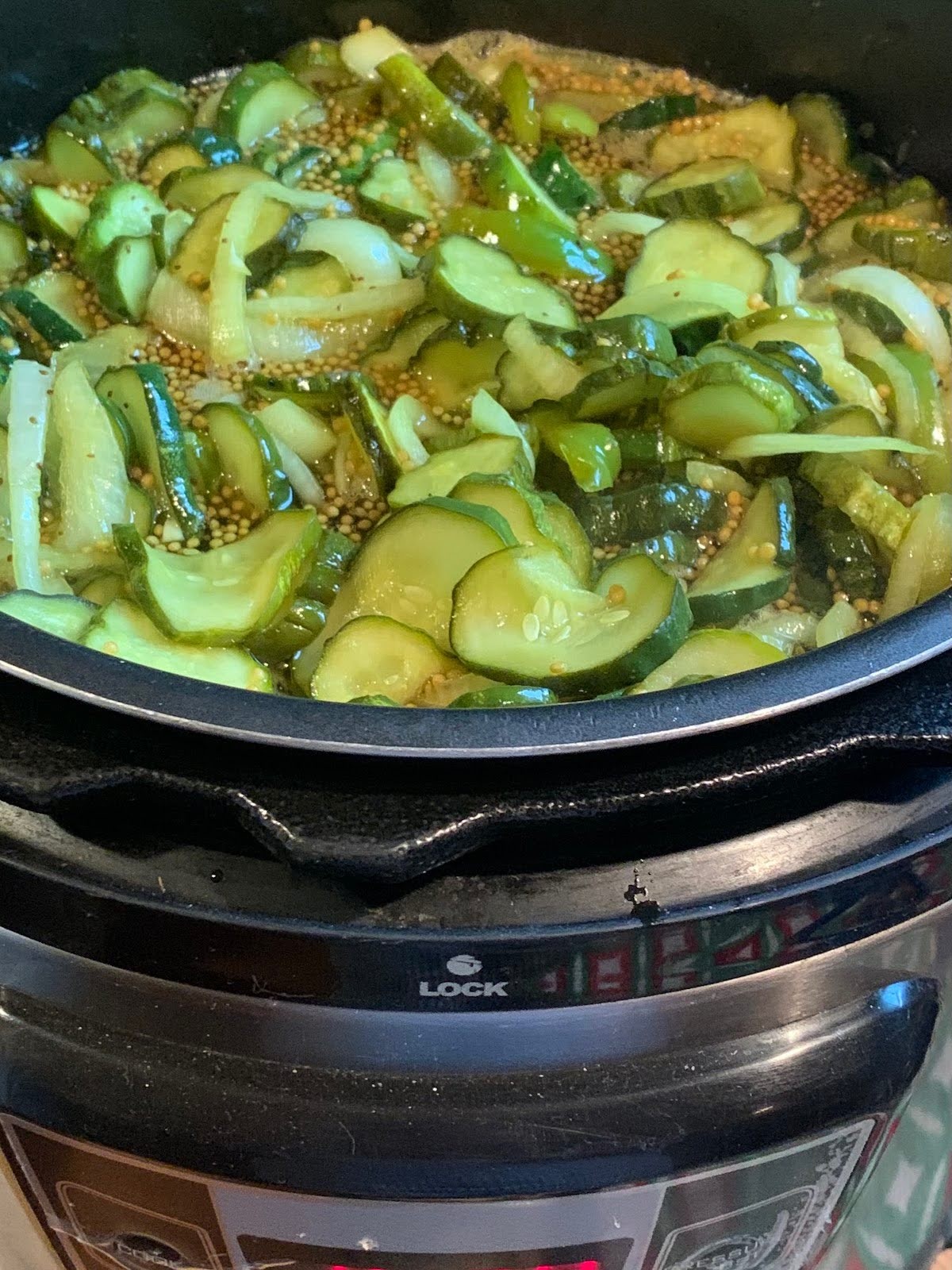
I always pressure can low-acid tomatoes.
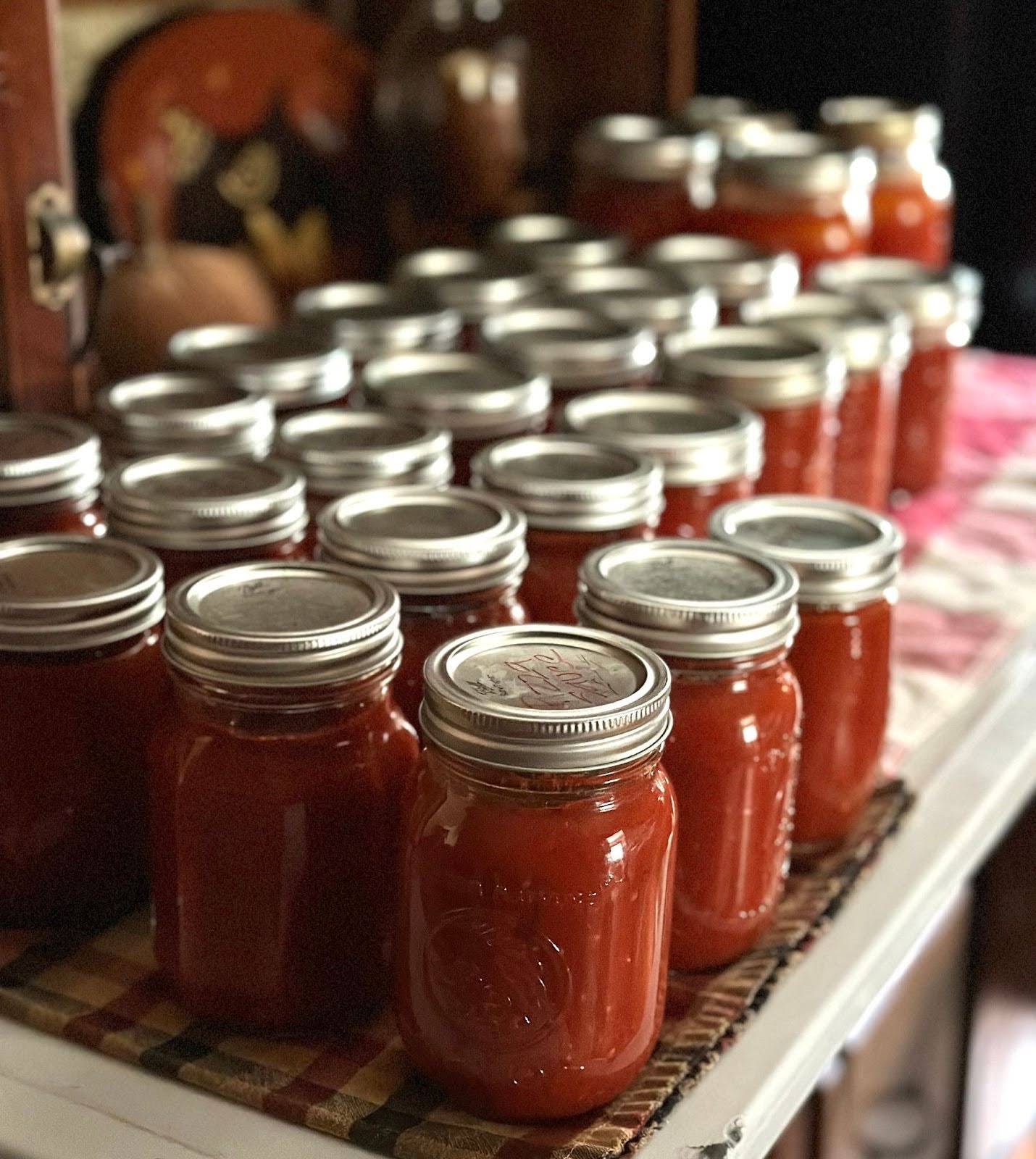
Cold Storage for Produce:
This last idea can be as simple as a corner in your basement or a fully functioning root cellar. Me? Well, houses built in 1864 with dirt floor basements seem to land somewhere in the middle. On the north wall, there are heavy, wooden shelves which I’m sure were used for food storage 160 years go. Today, I line them with canned goods, jars of dry beans, pasta, and rice. It’s cool enough down there for boxes of apples, potatoes, and onions, too.
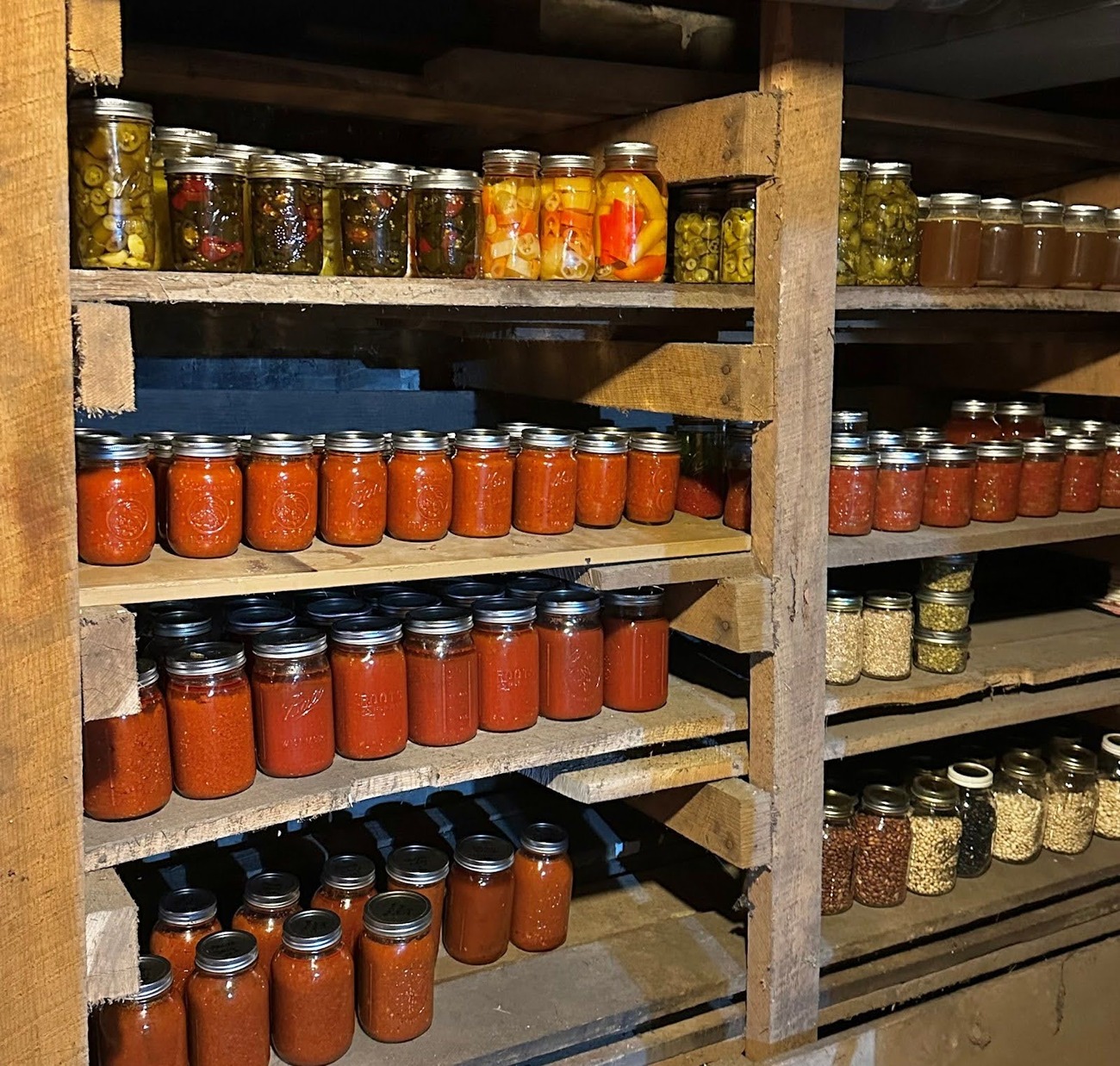
Very basic…do you have a spot with no heating vents that could be a great little storage room? Unheated corner in your garage? Mudroom? You can fill 5-gallon buckets, crocks, old ice cream pails, metal cans, food-safe plastic containers…just about anything that will hold produce.
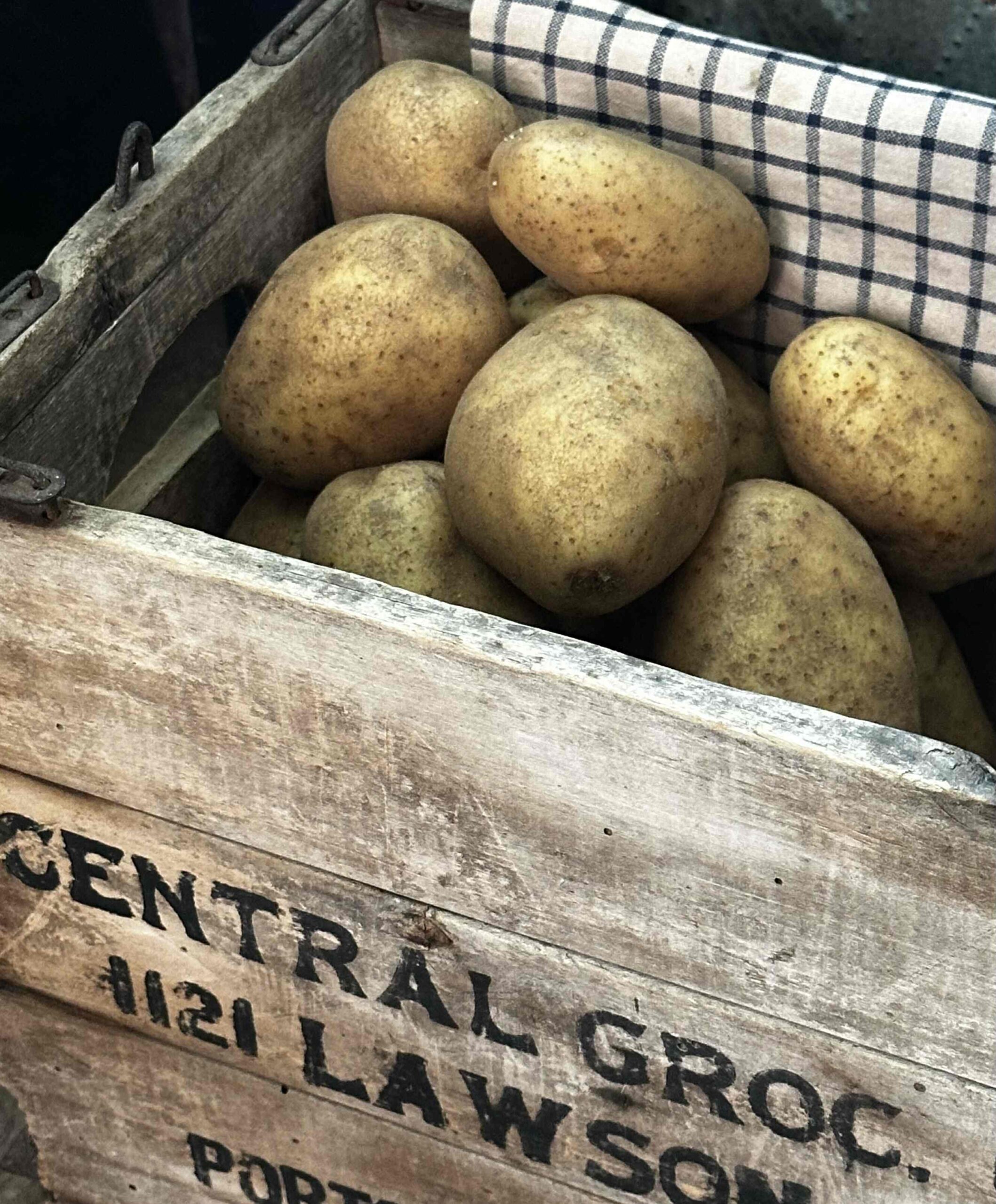
A basement…you can set up bins and shelves for produce and canned goods. Maybe a little warmer than typical “root cellar” cold storage, a basement should still be able to store produce for several months. Read up on how to keep items fresh…there are foods last longer in wooden boxes with slats for air circulation, while some need to be individually wrapped in paper, and still others do best in hanging mesh bags.
Underground Root Cellar…if you envision an underground root cellar, there are oodles of how-to’s online for building one. You can even find plans for a mini backyard root cellar. So what exactly is it? A root cellar is a traditional food storage space that preserves food by controlling temperature, humidity, and light. It uses the natural cooling and insulating properties found underground, making it ideal for storing fruits and veggies.
So, no matter if you’re tending an urban balcony garden, container gardening on your patio, or wrangling a sprawling country garden, there’s lots of ways to preserve your harvest. Let me know what tricks and tips you have for where you live…we can all learn something new!
September brings us subtle changes as the seasons shift…green leaves give way to russet, gold, and orange. As we anticipate winter, we rely on the tiny, fuzzy wooly worm. Folklore tells us the more black bands he has, the harder the winter will be. We enjoy the last of the county fairs, while looking forward to the thrill of autumn barn sales. Flowers, somehow, seem to put on their biggest show of color right now. Savor it all…this slowing down, winding down time of year.
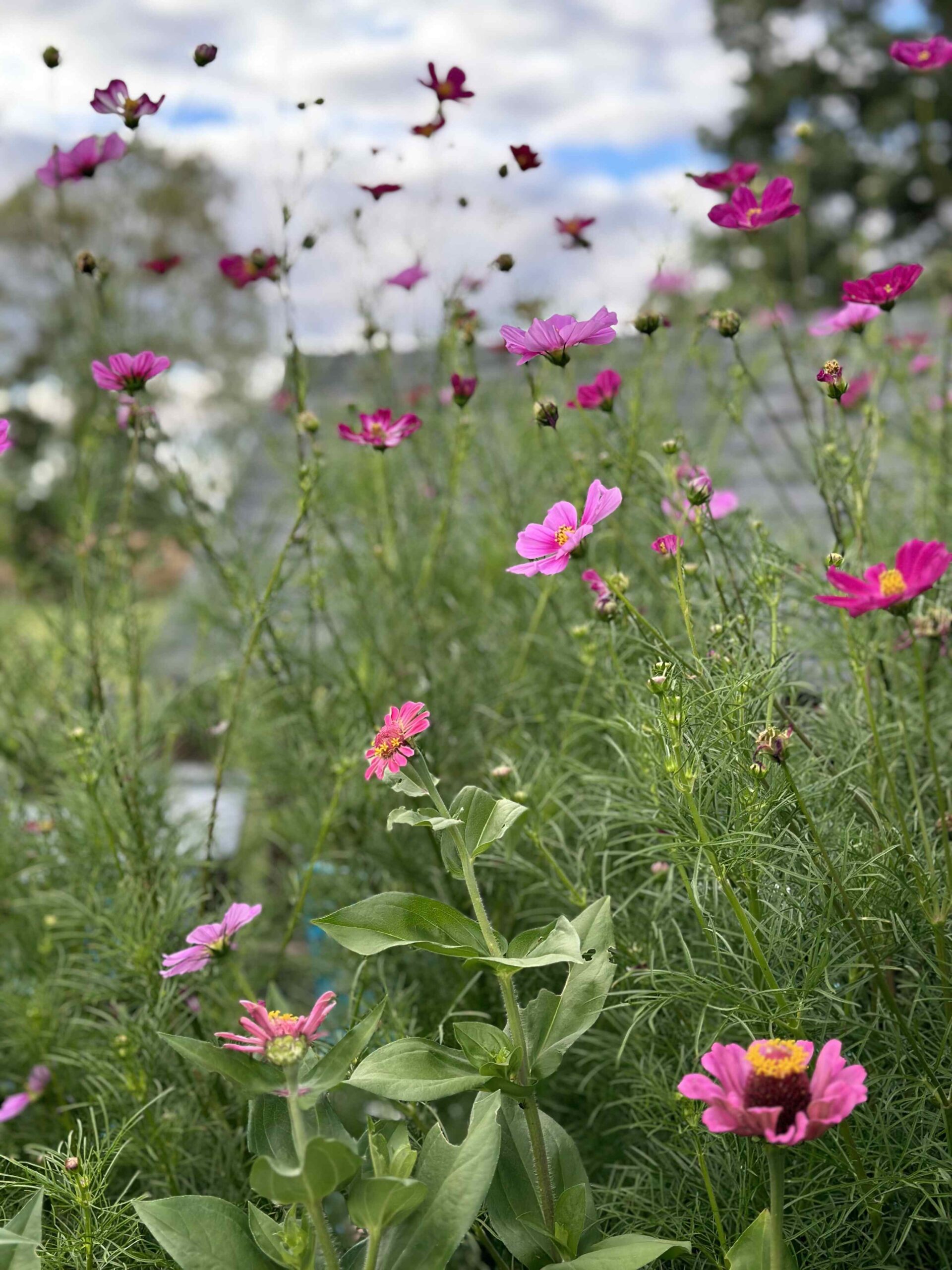






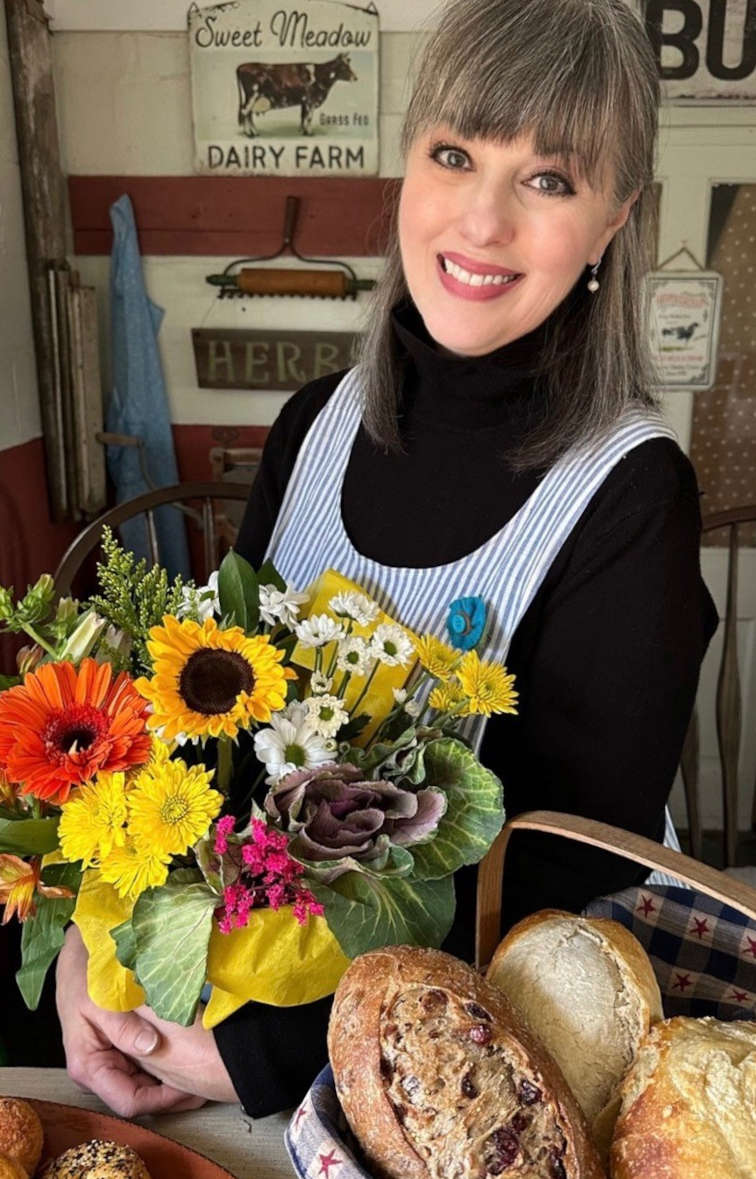




This was a great time to read about your canning, freezing, drying, and putting in food. I have done so much of all, I haven’t done any of it. With me in a recent brain injury (2 years ago), I read what you do, and it remembers of the things I can do, and the woman who is showing how to do, it’s an inspiration to go forward. Thank you so much for your everyday life. Mary Murray, God bless you!
Hi Ginny, it’s great to meet you! Thanks for your kind words…I definitely didn’t learn all this overnight, it’s taken a few years and I had some terrific teachers along the way. If you’re thinking you’d like to “put by” a few things, start by keeping it easy: setting aside boxes of pasta and rice is a great way to begin, tossing a few extra items in the freezer, and stocking up when markets have sales are good ways to be ready for power outages or if bad weather keeps trucks from making grocery store deliveries. Keep it simple and make it work for you! Thanks again for your kind words, Ginny, let me know how you’re coming along! Mary
You sure can make hard work look beautiful. 😉 My mother was the queen of the harvest I swear…and after growing up and being enlisted to help, I swore it off LOL. (Well, with school and then career and family, I truly didn’t have a spare moment. I did start canning a bit later (in my world, that’s what we called it – “canning” or “harvesting”) but limited it to canning tomatoes and green beens, freezing things and drying herbs. I still am shy around pressure canners after a bit of a mishap with one when I was young… In any event, I loved seeing your stores – reminds me of home and life as I once knew it. ~Robin~
Hi Robin! Thanks for always stopping by and taking time to drop a note.
One of the best things I’ve ever heard is, “Yes, you can do it all, just not all at the same time.” There are seasons to our lives, and we can’t put in a 60-hour work week and can tomatoes every day. We want to, I know, but it’s just not possible. And that’s okay…canning those tomatoes and green beans, freezing and drying herbs now surely brings back sweet memories of your mom. And I’m cautious with pressure cookers as well…I’m one of those that checks, double-checks, and then checks again! I’m glad you liked the post…just the tales of an old-fashioned soul who’s trying to remember the simple pleasures in this hectic world we live in. Thanks again, Robin!